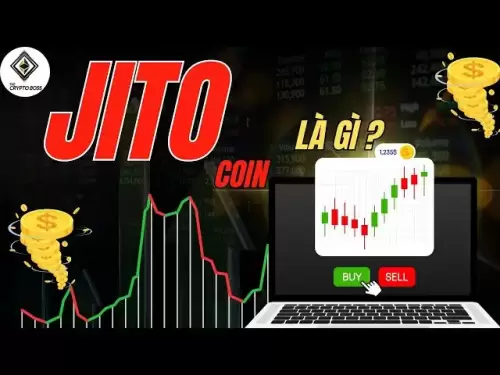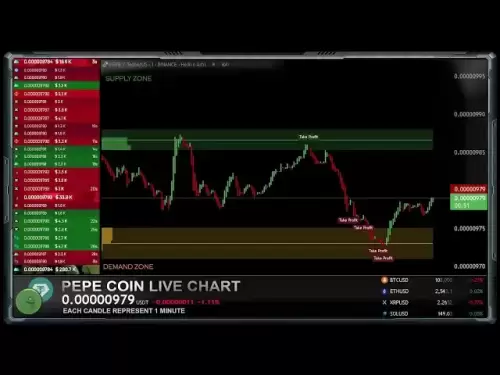-
 Bitcoin
Bitcoin $107,810.8710
-1.45% -
 Ethereum
Ethereum $2,531.4386
-1.75% -
 Tether USDt
Tether USDt $1.0000
-0.03% -
 XRP
XRP $2.2542
-0.99% -
 BNB
BNB $659.1350
-0.50% -
 Solana
Solana $148.5456
-2.40% -
 USDC
USDC $0.9999
-0.02% -
 TRON
TRON $0.2868
-0.44% -
 Dogecoin
Dogecoin $0.1666
-3.65% -
 Cardano
Cardano $0.5751
-2.36% -
 Hyperliquid
Hyperliquid $37.6845
-5.51% -
 Bitcoin Cash
Bitcoin Cash $494.9448
-0.65% -
 Sui
Sui $2.8396
-3.31% -
 Chainlink
Chainlink $13.2423
-2.59% -
 UNUS SED LEO
UNUS SED LEO $9.0482
0.02% -
 Stellar
Stellar $0.2467
-2.44% -
 Avalanche
Avalanche $17.8165
-3.63% -
 Shiba Inu
Shiba Inu $0.0...01158
-2.41% -
 Toncoin
Toncoin $2.7397
-3.42% -
 Hedera
Hedera $0.1560
-2.73% -
 Litecoin
Litecoin $85.8559
-2.34% -
 Monero
Monero $315.3710
-2.30% -
 Dai
Dai $1.0001
0.00% -
 Polkadot
Polkadot $3.3443
-2.03% -
 Ethena USDe
Ethena USDe $1.0001
0.01% -
 Bitget Token
Bitget Token $4.2888
-3.73% -
 Uniswap
Uniswap $7.3388
-1.57% -
 Aave
Aave $278.2986
-3.05% -
 Pepe
Pepe $0.0...09807
-3.67% -
 Pi
Pi $0.4563
-2.39%
What is the AVAX transaction fee?
The AVAX transaction fee on the Avalanche network includes a base fee, priority fee, and gas limit, affecting costs based on network congestion and transaction complexity.
Apr 22, 2025 at 06:35 am

The AVAX transaction fee is a crucial aspect for users engaging with the Avalanche network, as it determines the cost associated with executing transactions and interacting with smart contracts. This fee plays a significant role in the overall user experience and can influence the adoption and utility of the Avalanche platform. In this article, we will delve into the specifics of the AVAX transaction fee, exploring its structure, calculation, and factors that affect it.
Understanding the Basics of AVAX Transaction Fees
The AVAX transaction fee is the amount of AVAX tokens that users must pay to process transactions on the Avalanche network. These fees are essential for maintaining the network's security and incentivizing validators to process transactions efficiently. Unlike some other blockchain networks, Avalanche uses a dynamic fee structure that adjusts based on network congestion and transaction complexity.
Components of the AVAX Transaction Fee
The AVAX transaction fee consists of several components, each serving a specific purpose:
- Base Fee: This is a fixed amount of AVAX required for every transaction, ensuring that even the simplest transactions contribute to the network's upkeep.
- Priority Fee: Users can opt to pay an additional fee to prioritize their transactions during times of high network congestion. This fee is optional but can significantly reduce transaction processing times.
- Gas Limit: Similar to Ethereum, Avalanche uses a gas system to measure the computational effort required to execute transactions. The gas limit sets the maximum amount of gas a user is willing to spend on a transaction.
How AVAX Transaction Fees are Calculated
The calculation of AVAX transaction fees involves several steps:
- Determine the Gas Limit: Users must specify the maximum amount of gas they are willing to spend on a transaction. This depends on the complexity of the transaction or smart contract interaction.
- Set the Gas Price: The gas price is the amount of AVAX users are willing to pay per unit of gas. This price can be adjusted based on the urgency of the transaction.
- Calculate the Total Fee: The total fee is calculated by multiplying the gas limit by the gas price. For example, if the gas limit is 21,000 and the gas price is 0.000000025 AVAX, the total fee would be 0.000525 AVAX.
Factors Affecting AVAX Transaction Fees
Several factors can influence the AVAX transaction fee:
- Network Congestion: During periods of high demand, the base fee may increase to manage the load on the network. Users can choose to pay a higher priority fee to expedite their transactions.
- Transaction Complexity: More complex transactions or smart contract interactions require more gas, resulting in higher fees.
- Validator Competition: The number of validators and their willingness to process transactions can affect the fees. More competition among validators can lead to lower fees.
Comparing AVAX Transaction Fees to Other Networks
When compared to other blockchain networks, AVAX transaction fees offer several advantages:
- Lower Base Fees: Avalanche's base fees are generally lower than those of Ethereum, making it more cost-effective for users.
- Faster Transaction Times: The Avalanche consensus protocol allows for faster transaction processing, which can reduce the need for high priority fees.
- Scalability: Avalanche's architecture is designed to scale efficiently, which can help keep fees low even as the network grows.
Practical Examples of AVAX Transaction Fees
To illustrate how AVAX transaction fees work in practice, let's consider a few examples:
- Simple Token Transfer: A basic transfer of AVAX tokens might require a gas limit of 21,000 and a gas price of 0.000000025 AVAX, resulting in a fee of 0.000525 AVAX.
- Smart Contract Interaction: Interacting with a more complex smart contract might require a gas limit of 100,000 and a gas price of 0.00000005 AVAX, resulting in a fee of 0.005 AVAX.
- High-Priority Transaction: During peak times, a user might choose to pay a higher gas price of 0.0000001 AVAX to ensure their transaction is processed quickly, resulting in a fee of 0.0021 AVAX for a simple transfer.
How to Check and Estimate AVAX Transaction Fees
Users can check and estimate AVAX transaction fees using various tools and methods:
- Avalanche Wallets: Many Avalanche-compatible wallets, such as Core or MetaMask, provide built-in fee estimation tools. These tools calculate the expected fee based on current network conditions and transaction complexity.
- Online Fee Estimators: Several online platforms offer fee estimation services for the Avalanche network. Users can input their transaction details to get an estimate of the expected fee.
- Manual Calculation: Users can manually calculate fees using the gas limit and gas price. This method requires understanding the current network conditions and adjusting the gas price accordingly.
Tips for Managing AVAX Transaction Fees
To effectively manage AVAX transaction fees, consider the following tips:
- Monitor Network Conditions: Keep an eye on the current network congestion and adjust your gas price accordingly. Lower fees can be achieved during off-peak times.
- Optimize Transaction Complexity: If possible, simplify your transactions or smart contract interactions to reduce the gas limit and, consequently, the total fee.
- Use Fee Estimation Tools: Utilize available tools to estimate fees accurately before submitting transactions. This can help avoid overpaying for transactions.
Frequently Asked Questions
Q: Can AVAX transaction fees be refunded if a transaction fails?
A: No, AVAX transaction fees are non-refundable, even if a transaction fails. The fees are used to compensate validators for processing the transaction, regardless of its outcome.
Q: How can I reduce the impact of high AVAX transaction fees during peak times?
A: To mitigate high fees during peak times, consider scheduling non-urgent transactions during off-peak hours, using fee estimation tools to find the optimal gas price, and optimizing your transactions to use less gas.
Q: Are there any plans to adjust the AVAX transaction fee structure in the future?
A: While the Avalanche network is continually evolving, any potential changes to the transaction fee structure would be announced by the Avalanche team. Users should stay updated through official channels for any developments.
Q: Can I set a custom gas price for my AVAX transactions?
A: Yes, users can set a custom gas price for their AVAX transactions. This allows for more control over the transaction fee and can be adjusted based on the urgency and complexity of the transaction.
Disclaimer:info@kdj.com
The information provided is not trading advice. kdj.com does not assume any responsibility for any investments made based on the information provided in this article. Cryptocurrencies are highly volatile and it is highly recommended that you invest with caution after thorough research!
If you believe that the content used on this website infringes your copyright, please contact us immediately (info@kdj.com) and we will delete it promptly.
- XLM Price Prediction: Is Stellar Ready for a Breakout?
- 2025-07-08 19:10:13
- Bitcoin Reserves: The New Treasury Strategy for Corporations?
- 2025-07-08 18:30:12
- Bitcoin Buys Bonanza: DigitalX, Blockchain Group Double Down!
- 2025-07-08 18:30:12
- Pump.fun's PUMP Token and Gate.io: A $4 Billion Meme Coin Gamble?
- 2025-07-08 16:30:12
- DigitalX, BTC Holdings, Funding Secured: Aussie Crypto Firm Goes Big on Bitcoin
- 2025-07-08 17:10:12
- Acquire.Fi: Navigating the Web3 M&A Landscape as a Consultant
- 2025-07-08 16:30:12
Related knowledge
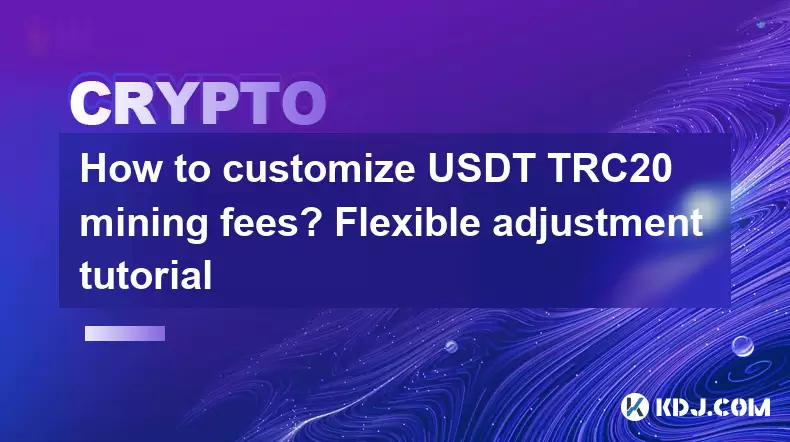
How to customize USDT TRC20 mining fees? Flexible adjustment tutorial
Jun 13,2025 at 01:42am
Understanding USDT TRC20 Mining FeesMining fees on the TRON (TRC20) network are essential for processing transactions. Unlike Bitcoin or Ethereum, where miners directly validate transactions, TRON uses a delegated proof-of-stake (DPoS) mechanism. However, users still need to pay bandwidth and energy fees, which are collectively referred to as 'mining fe...
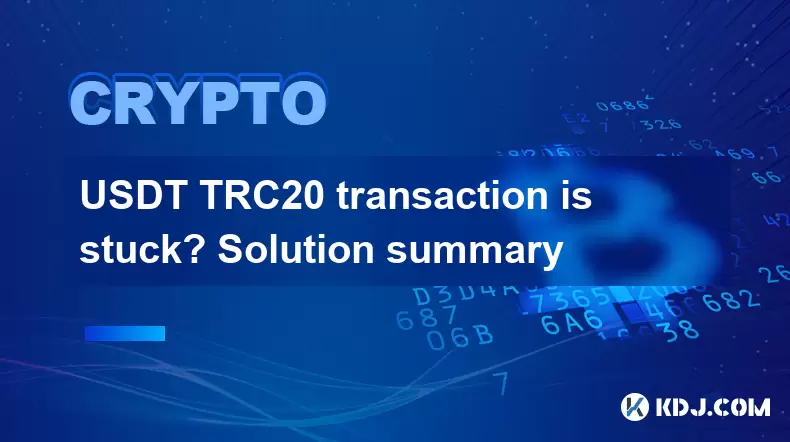
USDT TRC20 transaction is stuck? Solution summary
Jun 14,2025 at 11:15pm
Understanding USDT TRC20 TransactionsWhen users mention that a USDT TRC20 transaction is stuck, they typically refer to a situation where the transfer of Tether (USDT) on the TRON blockchain has not been confirmed for an extended period. This issue may arise due to various reasons such as network congestion, insufficient transaction fees, or wallet-rela...
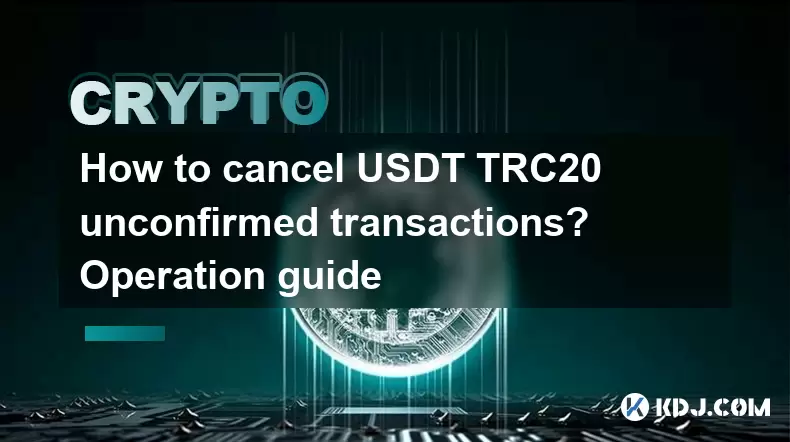
How to cancel USDT TRC20 unconfirmed transactions? Operation guide
Jun 13,2025 at 11:01pm
Understanding USDT TRC20 Unconfirmed TransactionsWhen dealing with USDT TRC20 transactions, it’s crucial to understand what an unconfirmed transaction means. An unconfirmed transaction is one that has been broadcasted to the blockchain network but hasn’t yet been included in a block. This typically occurs due to low transaction fees or network congestio...
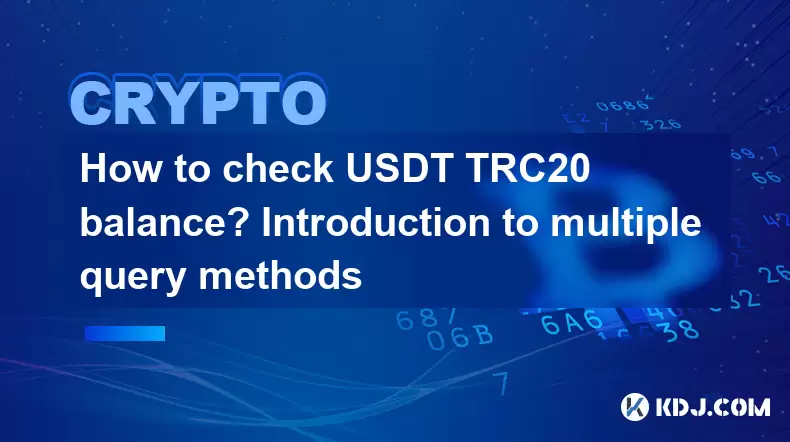
How to check USDT TRC20 balance? Introduction to multiple query methods
Jun 21,2025 at 02:42am
Understanding USDT TRC20 and Its ImportanceUSDT (Tether) is one of the most widely used stablecoins in the cryptocurrency market. It exists on multiple blockchain networks, including TRC20, which operates on the Tron (TRX) network. Checking your USDT TRC20 balance accurately is crucial for users who hold or transact with this asset. Whether you're sendi...
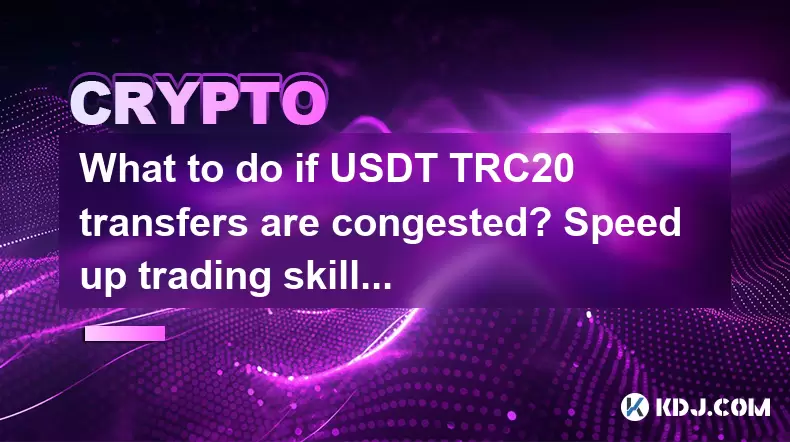
What to do if USDT TRC20 transfers are congested? Speed up trading skills
Jun 13,2025 at 09:56am
Understanding USDT TRC20 Transfer CongestionWhen transferring USDT TRC20, users may occasionally experience delays or congestion. This typically occurs due to network overload on the TRON blockchain, which hosts the TRC20 version of Tether. Unlike the ERC20 variant (which runs on Ethereum), TRC20 transactions are generally faster and cheaper, but during...
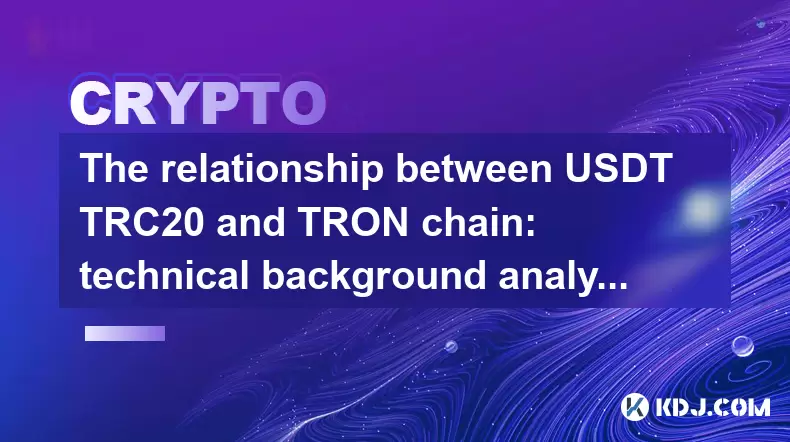
The relationship between USDT TRC20 and TRON chain: technical background analysis
Jun 12,2025 at 01:28pm
What is USDT TRC20?USDT TRC20 refers to the Tether (USDT) token issued on the TRON blockchain using the TRC-20 standard. Unlike the more commonly known ERC-20 version of USDT (which runs on Ethereum), the TRC-20 variant leverages the TRON network's infrastructure for faster and cheaper transactions. The emergence of this version came as part of Tether’s...

How to customize USDT TRC20 mining fees? Flexible adjustment tutorial
Jun 13,2025 at 01:42am
Understanding USDT TRC20 Mining FeesMining fees on the TRON (TRC20) network are essential for processing transactions. Unlike Bitcoin or Ethereum, where miners directly validate transactions, TRON uses a delegated proof-of-stake (DPoS) mechanism. However, users still need to pay bandwidth and energy fees, which are collectively referred to as 'mining fe...

USDT TRC20 transaction is stuck? Solution summary
Jun 14,2025 at 11:15pm
Understanding USDT TRC20 TransactionsWhen users mention that a USDT TRC20 transaction is stuck, they typically refer to a situation where the transfer of Tether (USDT) on the TRON blockchain has not been confirmed for an extended period. This issue may arise due to various reasons such as network congestion, insufficient transaction fees, or wallet-rela...

How to cancel USDT TRC20 unconfirmed transactions? Operation guide
Jun 13,2025 at 11:01pm
Understanding USDT TRC20 Unconfirmed TransactionsWhen dealing with USDT TRC20 transactions, it’s crucial to understand what an unconfirmed transaction means. An unconfirmed transaction is one that has been broadcasted to the blockchain network but hasn’t yet been included in a block. This typically occurs due to low transaction fees or network congestio...

How to check USDT TRC20 balance? Introduction to multiple query methods
Jun 21,2025 at 02:42am
Understanding USDT TRC20 and Its ImportanceUSDT (Tether) is one of the most widely used stablecoins in the cryptocurrency market. It exists on multiple blockchain networks, including TRC20, which operates on the Tron (TRX) network. Checking your USDT TRC20 balance accurately is crucial for users who hold or transact with this asset. Whether you're sendi...

What to do if USDT TRC20 transfers are congested? Speed up trading skills
Jun 13,2025 at 09:56am
Understanding USDT TRC20 Transfer CongestionWhen transferring USDT TRC20, users may occasionally experience delays or congestion. This typically occurs due to network overload on the TRON blockchain, which hosts the TRC20 version of Tether. Unlike the ERC20 variant (which runs on Ethereum), TRC20 transactions are generally faster and cheaper, but during...

The relationship between USDT TRC20 and TRON chain: technical background analysis
Jun 12,2025 at 01:28pm
What is USDT TRC20?USDT TRC20 refers to the Tether (USDT) token issued on the TRON blockchain using the TRC-20 standard. Unlike the more commonly known ERC-20 version of USDT (which runs on Ethereum), the TRC-20 variant leverages the TRON network's infrastructure for faster and cheaper transactions. The emergence of this version came as part of Tether’s...
See all articles























